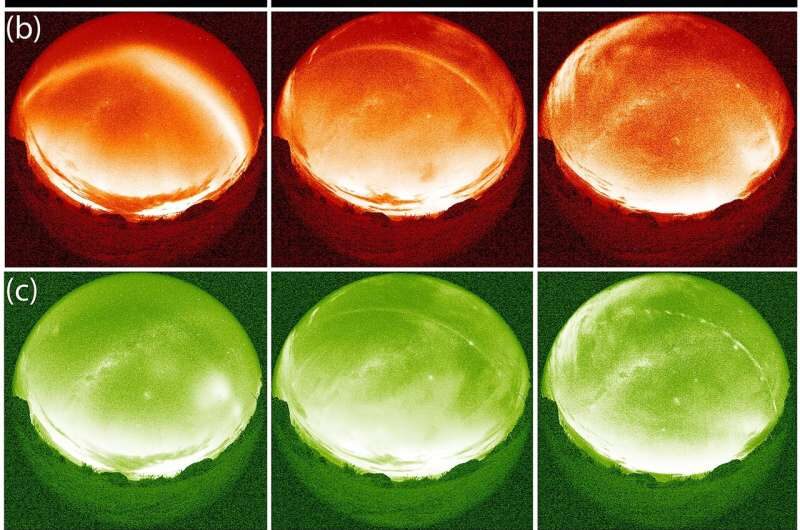
In 2015, citizen scientist I. Griffith noticed something unusual happening in the night sky above him over Dunedin, New Zealand. An arc of light, which he described as blood red, moved across the dark sky. Intrigued, he grabbed his camera and began filming the action. Over the course of the next 30 minutes, the arc slowly transformed into what has come to be known as a Strong Thermal Emission Velocity Enhancement (STEVE). Curious about what he had witnessed, he sent what he had captured to the professional stargazers at the University of Otago, also in Dunedin. Also intrigued, the group sent the images to other colleagues. Eventually a team of researchers was formed to study the event.
The researchers gathered data from other sources, including satellites and a sky-imager at a local observatory. In studying all the data, it became clear that the first images captured by Griffith showed a stable auroral red (SAR) arc, which is a subauroral structure and an event that is not actually an aurora but does occur in the atmosphere due to as yet unknown reasons.
The researchers noted that its arrival coincided with a geomagnetic storm — a disturbance of the Earth's magnetosphere — suggesting that the light was due to charged particles in the upper atmosphere. Then, as the arc began to subside, the red turned to mauve, the signature of a STEVE, which is not very well understood either. And then, as the STEVE began to fade, other light appeared nearby which was described as a green picket fence, which has been reported before — and of which even less is known.
The researchers note that all three of the light events were not auroras, as all three appeared to be the result of locally generated energy, rather than of particles coming from elsewhere. They also noted that the event was the first known to have all three seen together.
The movie shows the entire sequence of observations, together with unwarped movies in red, green, and blue channels, respectively. Credit: C. Martinis et al, Rainbow of the Night: First Direct Observation of a SAR Arc Evolving Into STEVE, Geophysical Research Letters (2022). DOI: 10.1029/2022GL098511
More information: C. Martinis et al, Rainbow of the Night: First Direct Observation of a SAR Arc Evolving Into STEVE, Geophysical Research Letters (2022). DOI: 10.1029/2022GL098511
Journal information: Geophysical Research Letters



Thephotosphere is a boundary layer of the highest energy. Discharge plasma. It forms as the incoming pressure of EMF rebounds from an object, of every size, it meets yet more incoming pressure .... a standing sphere wave is formed. As we approach polarity reversal, the pressures are becoming more volatile.
Changes should be detecable on nearby stars and the planets of this system.... but will we hear about them?